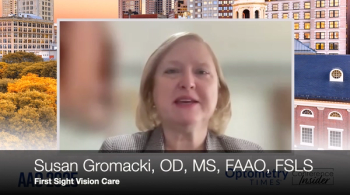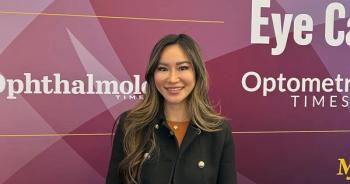
6 challenges when changing from a group to private practice
A little over 18 months ago, I decided to follow my passion and take a leap of faith changing my career. I went from a bustling MD/OD group practice to a private group OD practice and launched the Dry Eye Center of Pennsylvania (PA).
The views expressed here belong to the author. They do not necessarily represent the views of Optometry Times or UBM Medica.
A little over 18 months ago, I decided to follow my passion and take a leap of faith changing my career. I went from a bustling MD/OD group practice to a private group OD practice and launched the Dry Eye Center of Pennsylvania (PA).
The dream
My vision was for a focused dry eye treatment center. A stand-alone center was the initial thought, but after much guidance from successful dry eye practices, the timing for this did not seem right.
Previously from Dr. O'Dell:
Although dry eye disease is gaining exposure as a complex disease of the eye, it would be hard to survive as a stand-alone dry eye practice without a steady flow of patients from the start. Shire and Allergan have brought dry eye awareness to the media and public thanks in part to its marketing campaigns.
The future for a stand-alone center is a growing possibility as more patients become educated and grow frustrated with their current care and the need for screening and treatment grows.
Related:
The Dry Eye Center of PA started as an extension of a busy, two-location private OD practice-a perfect setting for success. James Tuttle, OD, and Andrew Leitzel, OD, the practice co-owners, shared my passion to treat dry eye disease early on.
Starting a center within a practice that contained a strong medical eyecare foundation meant the patient base was plentiful from the start.
Generating patients
Patients suffering from dry eye disease are seekers, seeking a better treatment for improved quality of life and improved ocular comfort. Having a website and a social media presence on Facebook and Twitter is great resources for these seekers.
Facebook has been a great way to engage our current patients. We are able to educate them about upcoming events such as patient seminars, introduce them to new treatments, alert them to media appearances, and keep them updated and actively engaged with our dry eye research.
If you build it, they will come. In our first year, we have generated patients from a three- to four-hour radius.
The support from the OD/MD community has been overwhelmingly positive. With the surge of new treatments and the cost of dry eye equipment, it is a challenge to have all of the latest in diagnostics and treatments needed to keep up with the medical model.
The Dry Eye Center of PA is happy to provide the technology to our surrounding colleagues. We’ve received referrals from ODs and MDs and are grateful for their support and trust.
Related:
Promoting the center
Our first year has been amazing with many unpaid opportunities for promoting our center and raising awareness about dry eye disease.
My very first patient, and long-time dry eye sufferer, was interviewed for a national magazine, First for Women, in a great article that was published in February 2016 and generated calls from as far away as Alaska.
Another patient was featured as part of an online awareness forum
Dry eye is a great topic for local news. We have had the opportunity to
We do have a marketing budget as well, spending most of our money on billboards and paid appearances on a lunchtime news program-“
Related:
Tools of the trade
Bringing a specialty focus to the practice doesn’t come cheap with the increasing cost of diagnostic and treatment equipment. It seems that most of what is needed for a dry eye practice to thrive is priced based on volume purchased.
From point-of-care testing, to lid cleansers for retail, to supplements that help reduce the inflammatory load on the ocular surface, it’s hard for a new center to maximize these savings as the practice is in its infancy.
It is important to offer the latest treatments for your patients, especially when you are specialized. It was only a few months after our launch that we acquired the LipiFlow (TearScience) thermal pulsation unit and now have introduced both LipiView and LipiScan (TearScience) for meibography and screening of our patients at our two locations.
Obstacles
Dr. Andrew Leitzel, co-owner of the practices that house the Dry Eye Center of PA, would like to see expansion of our over-the-counter (OTC) sales. He sees this generating an additional revenue stream as well as providing the best products conveniently to patients.
He believes that as doctors we must get past the idea of feeling like salesmen selling these products and more like clinicians who are offering the best products as a convenience to patients at check out. Patients tend to go to the pharmacy and pick the cheapest alternative possible or forget altogether what we recommended.
We are looking to add evaporative control eyewear for both day and night and would love to see eye healthy cosmetics available by doctor recommendation.
Dr. James Tuttle, co-owner, agrees that the start-up costs are high, but with time the center will thrive.
Related:
The future
We are in the midst of a time with many exciting advancements in the dry eye spectrum. We are already seeing this trend with the introduction of Shire’s Xiidra last year. Other treatments are being researched and used for evaporative dry eye including intense pulse light (IPL) and ThermiEye (ThermiGen) which uses radiofrequency to stimulate collagen production. Both of these treatments bring exciting, new advancements to dry eye and cosmetics.
Allergan also has a new method of treatment with neurostimulation to improve the quality of tear film layers.
The TearFilm Ocular Surface Dry Eye Workshop II (TFOS DEWS II) is due to release a big initiative for increased public awareness and a new committee dedicated to raising awareness around dry eye.
As for the Dry Eye Center of PA, this year will be great as we expand into a larger office space with a separate entrance. The expansion will allow for customizable exam lanes dedicated to treatments and also allow for the continued introduction of new technologies as they prove to be beneficial for our patients.
Newsletter
Want more insights like this? Subscribe to Optometry Times and get clinical pearls and practice tips delivered straight to your inbox.



















































.png)


